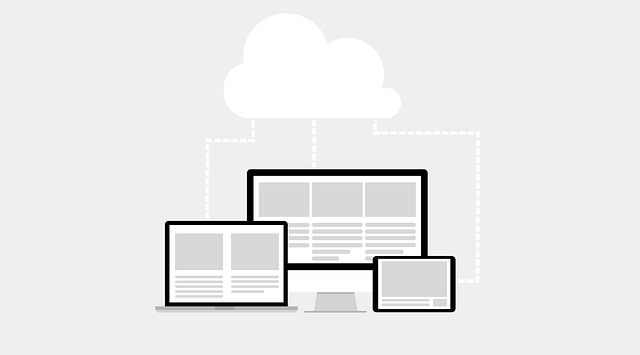Website speed is a crucial aspect of Technical SEO, impacting user experience and search engine rankings. Optimizing factors like server response time, page size, network latency, and browser rendering efficiency through strategies such as efficient coding, CDNs, image optimization, and cache management leads to faster load times, improved indexing, higher rankings, and increased user satisfaction. Using tools like Google PageSpeed Insights, GTmetrix, Pingdom, and WebPageTest is essential for measuring performance and identifying areas for improvement. This section covers fundamental Technical SEO strategies, from ensuring fast loading times and structured data markup to enhancing mobile-friendliness and site architecture, all vital for boosting search engine rankings and driving organic traffic.
Website speed optimization is a critical aspect of modern digital strategy, directly impacting user experience and Technical SEO. In today’s fast-paced online world, slow websites can lead to increased bounce rates and lower search rankings. This comprehensive guide delves into the key factors affecting website loading times, offering a detailed exploration of techniques for enhancing page speed. From understanding the fundamentals of Technical SEO to leveraging powerful analysis tools and implementing best practices, this article equips you with the knowledge to optimize your site’s performance consistently.
Understanding Website Speed and Its Impact on Technical SEO

Website speed is a critical component of user experience and can significantly impact a site’s success in the digital landscape. In today’s fast-paced world, visitors expect instant access to information, leading to high expectations for web page load times. A website that loads quickly not only enhances user satisfaction but also has a direct influence on Technical SEO (Search Engine Optimization). Search engines, particularly Google, prioritize sites with faster loading speeds in their search rankings. This is because faster websites offer improved accessibility and navigation, ensuring users have a positive experience, which are key factors in Technical SEO.
Technical SEO focuses on the underlying infrastructure and practices that enable search engines to crawl and index web content effectively. Website speed optimization plays a pivotal role in this area. By reducing page load times, you enhance the overall performance of your site, allowing search engine bots to traverse and process the pages more efficiently. This can lead to better indexing, improved site visibility, and ultimately, higher rankings in search results, all of which contribute to long-term online success.
Key Factors Affecting Website Loading Times

Website loading times are influenced by a multitude of factors, many of which can be optimized to enhance user experience and improve search engine rankings through Technical SEO strategies. One key area is server response time: the speed at which your web server processes requests. Efficient coding practices, utilizing content delivery networks (CDNs), and optimizing image sizes can significantly reduce this time.
Additionally, page size and asset optimization play a crucial role. Minimizing HTML, CSS, and JavaScript code, compressing files, and leveraging browser caching can dramatically decrease load times. Other factors include network latency, which can be improved through content placement and data center selection, as well as browser rendering efficiency, which can be optimized using responsive design and asynchronous loading techniques.
Techniques for Optimizing Page Speed: A Comprehensive Guide

Optimizing page speed is a multifaceted process that involves various techniques to enhance user experience and search engine rankings. A comprehensive guide should encompass both on-page and off-page strategies, ensuring every element contributes to faster loading times. By implementing efficient coding practices, minimizing HTTP requests, leveraging browser caching, and compressing media assets, developers can significantly reduce page load times. These technical SEO optimizations not only benefit users but also signal to search engines that a website is well-maintained and worthy of higher placement in search results.
Furthermore, utilizing content delivery networks (CDNs) distributes content across multiple servers globally, reducing latency and improving response times. Optimizing images, scripts, and stylesheets through minification and removing unused code further streamlines page rendering. Regularly testing website performance using tools like Google PageSpeed Insights enables continuous improvement. Incorporating these techniques into a robust Technical SEO strategy ensures that websites not only load quickly but also maintain those speeds as they scale, fostering a seamless user experience that drives engagement and conversion rates.
The Role of Web Server Configuration in Speed Enhancement

The configuration of your web server plays a pivotal role in website speed optimization, which is a critical aspect of Technical SEO. Adjusting settings can significantly impact page load times and overall user experience. A well-configured server ensures efficient handling of requests, enabling faster delivery of content to visitors. This involves tuning parameters like thread count, worker processes, and connection limits to match your site’s traffic patterns and resources.
For instance, increasing worker processes can handle more concurrent connections, reducing the wait time for each request. Additionally, optimizing cache settings and leveraging content delivery networks (CDNs) further enhances speed by storing static assets in geographic proximity to users, minimizing latency. These techniques not only improve website performance but also contribute to better search engine rankings and higher user satisfaction.
Tools to Measure and Analyze Website Performance

Measuring and analyzing website performance is a crucial step in optimizing your site for speed, which is a key aspect of Technical SEO. There are numerous tools available that provide detailed insights into page load times, resource usage, and potential bottlenecks. These include industry-standard options like Google PageSpeed Insights, GTmetrix, Pingdom, and WebPageTest. Each tool offers unique features and reports, enabling you to assess your website’s performance from various angles.
By utilizing these tools, you can identify slow loading elements, such as large images or inefficient code, and make data-driven decisions to enhance your site’s speed. They often provide suggestions for improvements and help track changes over time, ensuring your optimization efforts are effective and tailored to your specific needs.
Best Practices for Continuous Website Speed Optimization

